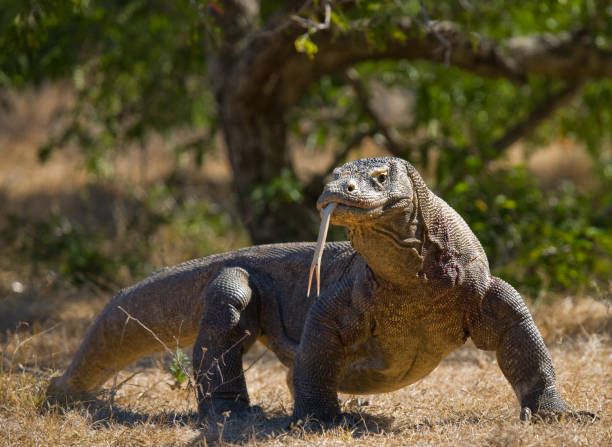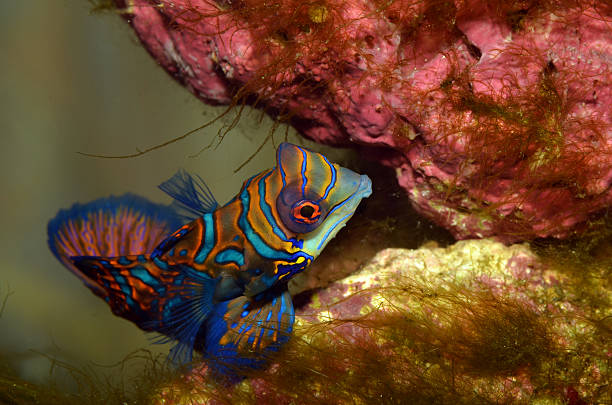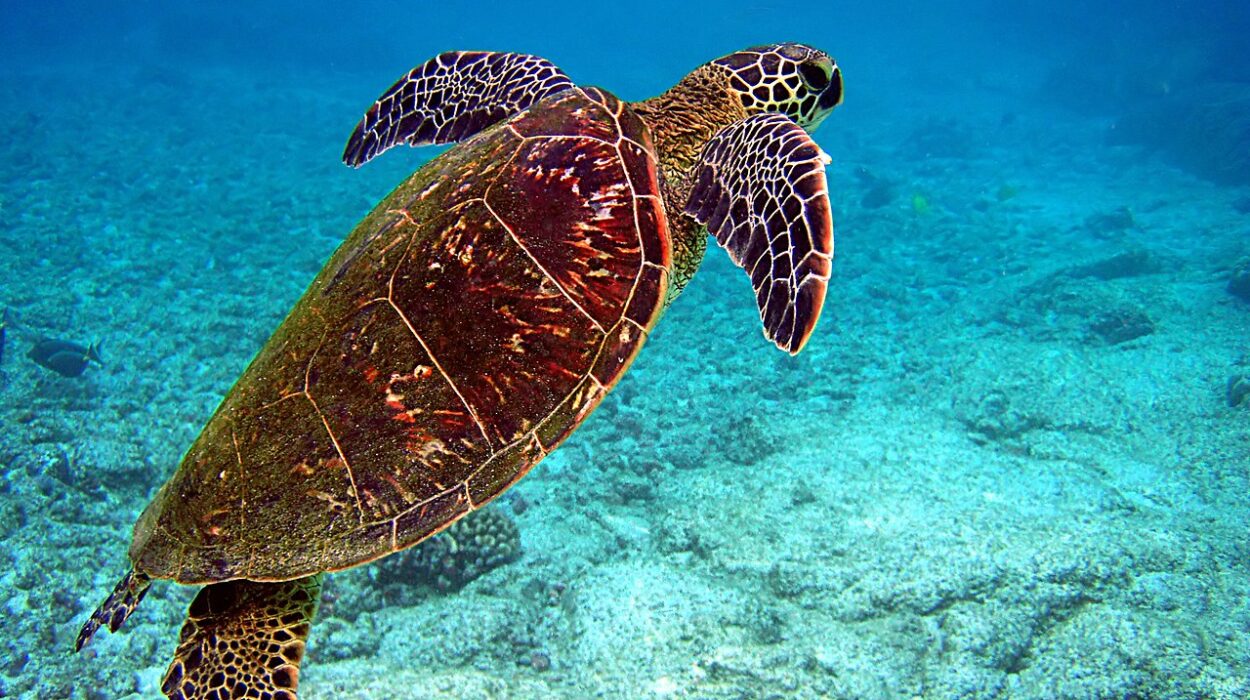Life on Earth has evolved in extraordinary ways, and one of the most remarkable variations is how different organisms reproduce. For most animals, reproduction requires two sexes—male and female—each contributing genetic material to produce offspring. Yet, in nature, not all species follow this rule. A surprising number of organisms—from insects and reptiles to fish and even some plants—can reproduce without males. This phenomenon, known as asexual reproduction or more specifically parthenogenesis in animals, challenges our traditional understanding of biology, evolution, and the role of sex in life’s continuity.
The existence of species that reproduce without males raises profound questions. Why would an organism give up the genetic diversity and evolutionary benefits of sexual reproduction? How does reproduction without males work at a cellular and genetic level? And what evolutionary pressures favor this unusual reproductive strategy? Understanding these questions takes us into the heart of evolutionary biology, genetics, and ecology, revealing that life’s strategies for survival are far more flexible and inventive than once thought.
The Biological Basics of Reproduction
Reproduction is the fundamental process through which life perpetuates itself. Broadly speaking, it occurs in two primary forms: sexual reproduction and asexual reproduction.
In sexual reproduction, two individuals—typically a male and a female—produce specialized sex cells called gametes (sperm and eggs). When these gametes fuse during fertilization, they form a new individual with a unique combination of genetic material from both parents. This genetic recombination drives diversity within a population, allowing species to adapt to changing environments and resist diseases.
Asexual reproduction, on the other hand, does not involve the fusion of gametes. Instead, offspring are genetically identical to the parent, as their genetic material comes from only one organism. Asexual reproduction can occur through various mechanisms such as budding, binary fission, fragmentation, and parthenogenesis. While this method lacks the genetic variation of sexual reproduction, it offers advantages such as speed, efficiency, and independence from the need to find mates.
In animals, asexual reproduction is relatively rare compared to plants, bacteria, and fungi, but when it occurs, it provides fascinating insights into evolutionary adaptability.
Understanding Parthenogenesis
The most well-known form of reproduction without males in animals is parthenogenesis, derived from the Greek words parthenos meaning “virgin” and genesis meaning “creation.” In parthenogenesis, females produce offspring from unfertilized eggs. These eggs develop into embryos and eventually into fully formed individuals, without the genetic input of a male.
Parthenogenesis can occur in various forms, depending on how the egg develops and whether it retains the full set of chromosomes. In some cases, parthenogenesis produces offspring that are clones of the mother, while in others, the offspring may show some genetic variation due to recombination during egg formation.
Parthenogenesis can be categorized into two main types: obligate and facultative.
Obligate parthenogenesis occurs in species where reproduction always takes place without males. These species have completely abandoned sexual reproduction and consist entirely of females. Facultative parthenogenesis, however, occurs in species that typically reproduce sexually but can switch to asexual reproduction under certain conditions, such as when males are absent or environmental stress makes mating difficult.
This flexibility allows certain species to survive in environments where finding a mate is rare, such as isolated islands or low-population habitats.
How Parthenogenesis Works at the Cellular Level
To understand why and how some species reproduce without males, it is important to look at what happens inside the cells during parthenogenesis.
Normally, during sexual reproduction, a process called meiosis reduces the number of chromosomes in gametes by half. When a sperm fertilizes an egg, the resulting zygote restores the full set of chromosomes, half from each parent. In parthenogenesis, however, the egg develops without sperm, so mechanisms must exist to restore the diploid (double) chromosome number to ensure normal development.
There are several mechanisms through which this can happen:
- Automixis: In this process, the egg undergoes meiosis as usual, but the chromosomes double up or two haploid nuclei fuse to restore the diploid number. This can introduce limited genetic variation but still results in offspring that are genetically very similar to the mother.
- Apomixis: Here, the egg skips meiosis entirely, maintaining the mother’s full set of chromosomes. The offspring are true clones, genetically identical to the mother.
These cellular strategies allow an organism to bypass fertilization while still producing viable offspring. The choice of mechanism can influence the level of genetic diversity in the offspring and thus their adaptability.
Species That Reproduce Without Males
While parthenogenesis may sound like science fiction, it is surprisingly widespread in nature. It occurs across many taxonomic groups, including insects, crustaceans, reptiles, amphibians, and even some fish species.
Among invertebrates, parthenogenesis is common and well-documented. Many species of aphids, bees, wasps, and stick insects reproduce this way. For example, in certain species of honeybees, males (drones) are produced parthenogenetically from unfertilized eggs, while females (workers and queens) arise from fertilized ones. This system, known as haplodiploidy, has profound implications for the evolution of social behavior in insects.
In vertebrates, parthenogenesis is much rarer but no less fascinating. Several species of whiptail lizards (genus Aspidoscelis) are entirely female and reproduce exclusively by parthenogenesis. In these species, eggs develop into genetically identical daughters without any male involvement. Remarkably, these lizards sometimes still perform mating-like behaviors with each other, which may help stimulate ovulation.
Another striking example comes from komodo dragons, the largest living lizards. Female Komodo dragons kept in captivity without males have been observed laying fertile eggs that hatched into healthy offspring. Genetic analysis showed that these offspring were all male, which in theory allows a single isolated female to establish a new population if she later encounters a mate.
In the aquatic world, certain species of sharks such as bonnethead sharks and zebra sharks have also been recorded reproducing through parthenogenesis in captivity. This ability likely serves as a survival mechanism in environments where mates are scarce.
The Advantages of Reproduction Without Males
Reproducing without males might seem counterintuitive, especially given the evolutionary success of sexual reproduction. However, parthenogenesis offers several advantages under specific circumstances.
One major benefit is efficiency. A single female can produce offspring without the need to find a mate, saving time and energy. This is particularly advantageous in isolated habitats, such as islands, where potential mates are few. It also allows a species to rapidly colonize new environments since every individual is capable of reproducing.
Another advantage is population stability. In environments that are stable and unchanging, producing genetically identical offspring can be beneficial because the mother’s genetic makeup is already well-suited to those conditions. Parthenogenesis can also act as a backup reproductive strategy for species that usually reproduce sexually but occasionally face conditions where mating opportunities are limited.
Furthermore, in some species, parthenogenesis can help maintain genetic purity or eliminate harmful genetic combinations that might arise through sexual mixing. In certain hybrid species of reptiles and insects, parthenogenesis allows them to reproduce even when their hybrid chromosomes make normal sexual reproduction difficult or impossible.
The Disadvantages and Limitations
Despite its advantages, parthenogenesis is not without significant drawbacks. The most important limitation is the lack of genetic diversity. Sexual reproduction shuffles genetic material from two parents, creating offspring with new gene combinations. This diversity is the raw material for evolution, enabling populations to adapt to changing environments, resist parasites, and survive disease outbreaks.
In contrast, a parthenogenetic population is essentially a group of genetic clones. Without new genetic variation, such populations may become vulnerable to environmental changes or emerging pathogens. Over time, harmful mutations can accumulate—a process known as Muller’s ratchet—which may lead to a gradual decline in fitness.
Additionally, parthenogenesis can limit evolutionary potential. While it may offer short-term reproductive efficiency, it often comes at the expense of long-term adaptability. This trade-off helps explain why most animals have retained sexual reproduction as their primary reproductive strategy, despite its higher energy cost and dependence on finding mates.
Facultative Parthenogenesis: The Best of Both Worlds
Some species have evolved the ability to reproduce both sexually and asexually, depending on environmental conditions. This is known as facultative parthenogenesis, and it provides a remarkable degree of flexibility.
For instance, many species of aphids reproduce parthenogenetically during the summer when conditions are favorable, allowing for rapid population growth. As winter approaches and conditions become harsh, they switch to sexual reproduction to produce eggs with thicker shells that can survive the cold. This alternation between reproductive modes combines the advantages of both strategies: the speed and simplicity of asexual reproduction with the genetic diversity of sexual reproduction.
Similar flexibility has been observed in certain reptiles and fish. For example, female boa constrictors and hammerhead sharks have been documented reproducing parthenogenetically when isolated from males, yet they revert to sexual reproduction when males become available. Such adaptability may represent a key evolutionary advantage in unpredictable environments.
Parthenogenesis in Plants and Microorganisms
While parthenogenesis in animals captures public attention, asexual reproduction is far more common and varied in plants and microorganisms. Many plant species reproduce through a process called apomixis, in which seeds are produced without fertilization. The resulting plants are genetically identical to the parent, ensuring that desirable traits such as drought resistance or high yield are preserved.
In microorganisms, asexual reproduction is the dominant mode of propagation. Bacteria reproduce through binary fission, producing identical daughter cells. Although this process does not involve males, bacteria have evolved other mechanisms such as horizontal gene transfer to introduce genetic diversity, allowing them to adapt rapidly to environmental changes and antibiotic pressures.
Evolutionary Perspectives: Why Parthenogenesis Exists
The persistence of parthenogenesis in nature, despite its limitations, poses a fascinating evolutionary question. From an evolutionary standpoint, sex exists because it creates diversity, which enhances a population’s ability to adapt and evolve. So why would any lineage abandon it?
The answer lies in the balance between the costs and benefits of sex. In stable environments where conditions change little over time, genetic diversity may not be as crucial. Under such conditions, parthenogenesis can provide a faster and more efficient way to reproduce, allowing populations to expand rapidly.
Parthenogenesis can also arise as an evolutionary accident following hybridization between two related species. In some cases, the hybrid offspring may be sterile when reproducing sexually but capable of reproducing asexually. Over time, such lineages can persist and even thrive without males. Many parthenogenetic reptiles, such as whiptail lizards, originated this way.
Another explanation is ecological necessity. In species that face mate scarcity—whether due to isolation, skewed sex ratios, or environmental stress—parthenogenesis ensures that reproduction can continue even when males are absent. It serves as a reproductive safety net, preventing extinction during periods when sexual reproduction is impossible.
The Genetic Consequences of Reproducing Without Males
From a genetic perspective, parthenogenesis alters the flow of genes within populations. In sexually reproducing species, genes mix each generation through recombination, creating endless combinations of traits. Parthenogenetic species bypass this process, preserving the genetic blueprint of the mother almost unchanged.
This stability can be advantageous in the short term, but over generations, it can lead to genetic stagnation. Mutations, which naturally occur during DNA replication, accumulate over time. In sexual species, harmful mutations can be masked or eliminated through recombination and selection. In asexual populations, however, these mutations persist, potentially leading to a gradual decline in population health.
Despite these challenges, some parthenogenetic species appear remarkably successful. Certain lineages of whiptail lizards, for instance, have persisted for thousands of generations without males. Scientists believe that occasional recombination events or rare genetic exchanges during meiosis may provide just enough variation to sustain these species over evolutionary timescales.
Parthenogenesis and the Future of Evolution
The study of parthenogenesis offers deep insights into the flexibility and resilience of life. It demonstrates that evolution is not confined to one rigid pathway but can experiment with multiple reproductive strategies depending on environmental pressures and genetic circumstances.
As scientists continue to uncover the genetic mechanisms behind parthenogenesis, new questions arise about its potential implications for conservation and biotechnology. Understanding how some species reproduce without males could help preserve endangered animals that struggle to find mates in fragmented habitats. It might also inform agricultural science, where apomixis could be used to produce stable, high-yield crop varieties without the need for constant breeding.
Parthenogenesis even has potential implications for space exploration and long-term colonization scenarios, where isolated populations might need to reproduce without access to both sexes. Although speculative, such research highlights the profound relevance of this phenomenon beyond its immediate biological context.
Conclusion
Reproduction without males defies the traditional expectation that two sexes are essential for life to continue. Through parthenogenesis and other forms of asexual reproduction, nature demonstrates remarkable creativity in ensuring survival under diverse conditions.
While parthenogenesis sacrifices genetic diversity, it provides speed, independence, and adaptability—qualities that can mean the difference between extinction and persistence in challenging environments. From insects and lizards to sharks and plants, the ability to reproduce without males represents one of life’s most intriguing adaptations.
Ultimately, the existence of parthenogenetic species reminds us that evolution is not bound by human notions of normality. Life is endlessly inventive, always finding new paths to endure. Whether through the union of two or the strength of one, the story of reproduction—male or not—is the story of life’s relentless drive to continue.






